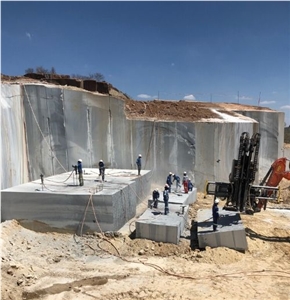Journeying Via Granite Quarries in South Africa: A Visual Odyssey
Journeying Via Granite Quarries in South Africa: A Visual Odyssey
Blog Article
Revealing the Mysteries of Granite Quarrying: Where Strength and Style Meet
The world of granite quarrying is a realm where the raw toughness of nature merges with human artistry to produce frameworks that stand the test of time with an air of elegance. From the depths of quarries to the precise sprucing up in workshops, the procedure of transforming granite right into architectural wonders is a complex dance of custom and development. As we peer right into the depths of this ancient craft, we start to reveal the concealed ins and outs that form the very significance of our constructed environment.
The Beginnings of Granite Quarrying
In the annals of building history, the origins of granite quarrying are shrouded in a tapestry of old craftsmanship and geological wonders. Going back to old Egypt and Mesopotamia, the removal of granite from quarries marked the beginning of a journey that would ultimately result in the creation of several of the globe's most iconic structures.
Granite quarrying's origins can be traced to the competent artisans that acknowledged the stone's toughness and visual allure. With a mix of primitive tools and sheer decision, these very early quarry employees discovered granite blocks that would certainly come to be the foundation of worlds.
As human beings progressed, so did the strategies of quarrying granite. The Romans, renowned for their design expertise, created sophisticated techniques for drawing out granite to build monuments, temples, and roadways that stood the examination of time.
The heritage of these old quarrying techniques continues to shape contemporary design, with granite continuing to be an icon of toughness and beauty in construction jobs around the world. (granite quarries in south africa)
Devices of the Quarrying Trade
The development of granite quarrying methods from ancient civilizations to modern times highlights the crucial function played by the tools of the quarrying sell shaping the sector's techniques. In old times, quarrying tools were primary, usually containing knives, hammers, and wedges made from products like bronze or iron. These devices needed significant workforce and time to essence granite blocks from quarries.

In addition, the introduction of pneumatic devices and high-powered equipment has dramatically minimized the physical labor needed in quarrying operations, enhancing worker safety and productivity. As the quarrying industry remains to innovate, the tools of the trade remain at the forefront of driving progression and forming the future of granite removal.
Removing Blocks of Granite
Using precision equipment and advanced strategies, the removal of granite blocks from quarries has actually become an innovative process in the modern-day quarrying industry. Regulated blasting methods are then utilized to damage apart the granite into workable sections.

Sprucing Up and Completing Techniques
To attain a perfect surface on granite blocks, proficient craftsmens utilize a series of thorough polishing and ending up methods. After the initial removal and shaping procedures, the granite blocks go through a comprehensive sprucing up phase to boost their natural elegance and toughness. One common technique used in polishing granite is ruby abrasion, where industrial rubies are used to grind and brighten the rock to a smooth finish. This procedure not only produces a glossy surface yet also ensures uniformity in shade and structure throughout the granite block.
In addition to sprucing up, completing strategies are put on additional improve the granite's look. These methods might include flaming, sharpening, or cleaning, each offering one-of-a-kind appearances and surfaces to suit different aesthetic preferences. Flaming, for example, entails revealing the granite surface to high temperature levels to produce a harsh, distinctive coating, suitable for exterior applications where slip-resistance is important. Sharpening, on the other hand, gives a matte this content surface that is smooth to the touch, best for indoor counter tops and floor covering. By meticulously selecting and using these brightening and finishing techniques, craftsmens can change raw granite obstructs right into splendid items that display both stamina and beauty.

Environmental Effect and Sustainability
With the growing focus on ecological awareness in the market, granite quarrying methods are progressively scrutinized for their impact on all-natural sources and long-term sustainability. Furthermore, the transportation of granite from quarries to refining centers produces carbon discharges, even more adding to environmental destruction.
To minimize these impacts and ensure sustainability in granite quarrying, industry stakeholders are embracing different steps. Executing innovative innovations original site to lower energy usage and water use, recovering quarried land for ecological reconstruction, and advertising accountable sourcing techniques are some strategies being employed. In addition, certifications such as the Forest Stewardship Council (FSC) and the Leadership in Power and Environmental Style (LEED) help consumers identify eco-friendly granite products.
Verdict
In verdict, granite quarrying is a process that requires specialized tools and techniques to extract blocks of granite and brighten them to a high degree of finish. While the environmental impact of quarrying can be considerable, initiatives are being made to improve sustainability techniques hop over to these guys in the industry. Generally, granite quarrying is a fragile equilibrium between harnessing the toughness and elegance of this all-natural rock while reducing its effect on the environment.
Report this page